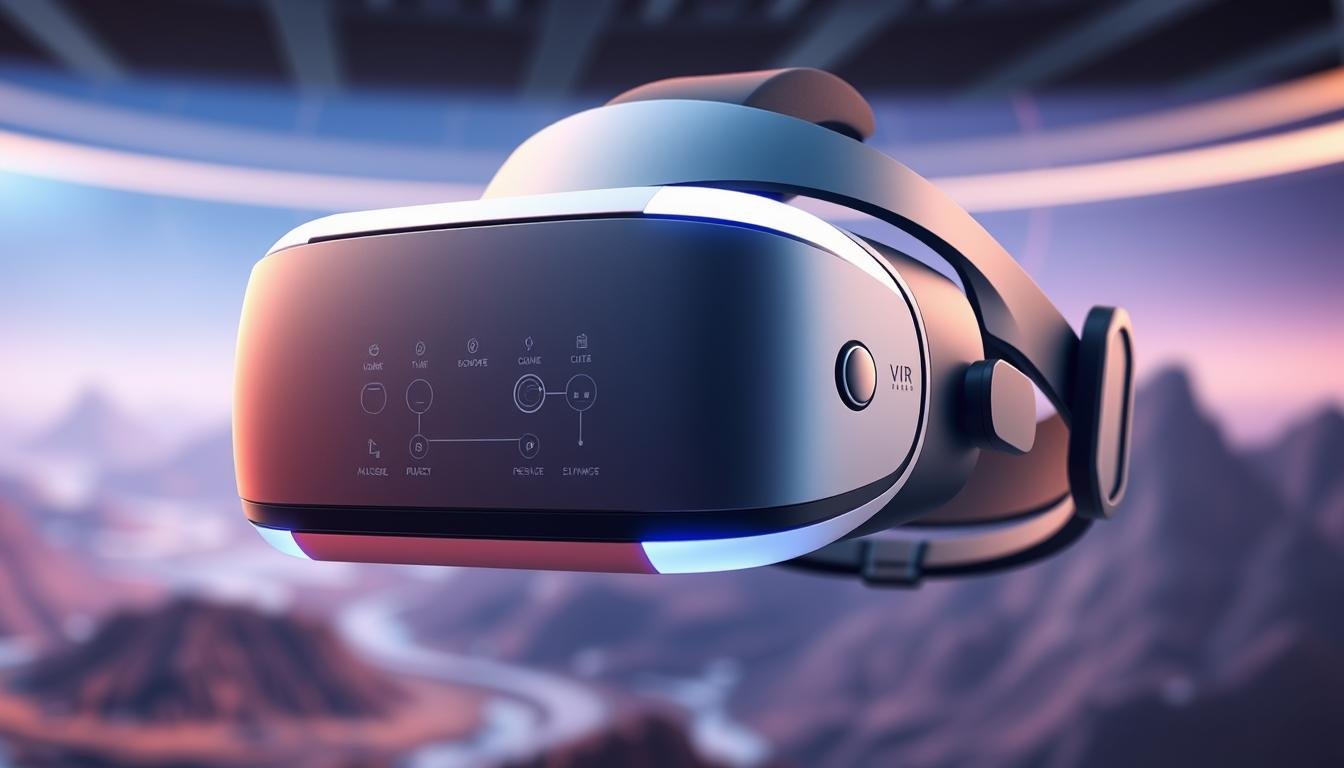The world of virtual reality is evolving at an unprecedented pace. In 2025, the industry is set to unveil groundbreaking advancements that will redefine how we interact with digital environments. From standalone devices to PC-connected systems, the upcoming releases promise to deliver immersive experiences like never before.
Industry giants such as Meta and Apple are leading the charge, introducing cutting-edge features that blend mixed reality with high-end VR. These innovations are not just about better visuals; they focus on improving tracking, ergonomic design, and overall user comfort. Whether you’re a gaming enthusiast or a professional exploring new applications, these devices are designed to cater to a wide range of needs.
This article dives into the most exciting developments expected in 2025. You’ll discover detailed insights into the latest specs, features, and the potential market impact of these devices. Stay ahead of the curve and explore what the future holds for virtual reality.
Key Takeaways
- Discover the latest advancements in virtual reality for 2025.
- Explore devices from industry leaders like Meta and Apple.
- Learn about improvements in display, tracking, and ergonomic design.
- Understand the market impact and pricing of upcoming releases.
- Get insights into standalone and PC-connected VR systems.
Introduction: The Exciting Future of VR in 2025
By 2025, virtual reality will take a giant leap forward, blending innovation with practicality. The rapid growth of this technology is transforming how we interact with digital environments. What was once a niche concept is now moving into mainstream use, thanks to industry leaders like Meta and Apple.
Headsets are no longer just for gaming. They are becoming essential tools for productivity, education, and mixed reality experiences. For instance, the Meta Quest series has already set a high standard, and Apple’s Vision Pro is pushing boundaries with its advanced features.
Early announcements, such as Android XR, hint at transformative hardware concepts. These developments are not just about better visuals but also about improving user comfort and functionality. Whether you’re a gamer or a professional, the future of headsets promises something for everyone.
Here’s a quick look at what to expect in 2025:
| Feature | Impact |
|---|---|
| Enhanced Display | Sharper visuals and wider fields of view |
| Improved Ergonomics | Lighter and more comfortable designs |
| Mixed Reality Integration | Seamless blending of virtual and real worlds |
As we move closer to 2025, the possibilities are endless. Stay tuned as we dive deeper into the innovations shaping the future of virtual reality.
Overview of 10 Most Anticipated VR Hardware Announcements

The next wave of immersive technology is set to redefine digital interaction in 2025. From gaming to productivity, the upcoming releases promise to deliver unparalleled experiences. This section provides a broad outline of the ten key announcements, focusing on their innovative aspects and market impact.
One of the standout devices is the Apple Vision Pro, priced at $3,499. It combines advanced display technology with seamless mixed reality integration. Similarly, the Meta Quest Pro 2 is expected to improve upon its predecessor, offering enhanced tracking and ergonomic design.
These devices cater to a wide range of users, from gaming enthusiasts to professionals. For instance, the Meta Quest Pro 2 is designed to support both gaming and productivity applications. Meanwhile, the Apple Vision Pro focuses on delivering a premium experience with its high-resolution display and intuitive controls.
Here’s what you can expect in the upcoming sections:
- Detailed reviews of each device, including performance and display quality.
- Comparisons between high-end and budget-friendly options.
- Insights into how brands like Meta and Apple are shaping the future of immersive tech.
Whether you’re looking for a device to enhance your gaming experience or boost productivity, 2025 has something for everyone. Stay tuned as we dive deeper into these groundbreaking innovations.
Features Transforming the VR Experience

The landscape of immersive technology is undergoing a dramatic transformation. Innovations in display and tracking are pushing the boundaries of what’s possible, offering users more lifelike and seamless experiences. These advancements are not just about better visuals; they focus on enhancing interaction and comfort.
Innovative Display Technologies
New display technologies are revolutionising how we perceive virtual environments. Micro-OLED screens, for instance, deliver higher resolutions and sharper visuals. This ensures that every detail is crisp and lifelike, making the experience more immersive.
High-refresh rate displays are another game-changer. They reduce motion blur and provide smoother transitions, which is crucial for fast-paced activities like gaming. Improved contrast ratios also deepen immersion by making colours more vibrant and realistic.
Devices like the PlayStation VR 2 and Valve Index are leading the way in this area. Their advanced displays offer wider fields of view, ensuring that users feel fully immersed in their virtual surroundings.
Enhanced Tracking and Immersion Techniques
Tracking systems have seen significant improvements, enabling more natural movement and reducing latency. This means your actions in the virtual world feel instantaneous, enhancing the sense of presence.
Ergonomic controllers also play a vital role. They are designed to fit comfortably in your hands, allowing for extended use without fatigue. Advanced features like finger tracking add another layer of realism, making interactions feel more intuitive.
For example, the Vive series has set a high standard with its precise tracking and responsive controls. These innovations ensure that users can fully engage with their virtual environments without distractions.
| Feature | Benefit |
|---|---|
| Micro-OLED Screens | Sharper visuals and higher resolutions |
| High-Refresh Rate Displays | Smoother transitions and reduced motion blur |
| Advanced Tracking Systems | Natural movement and reduced latency |
| Ergonomic Controllers | Comfortable and intuitive interactions |
These advancements are shaping the future of immersive technology, offering experiences that are more engaging and realistic than ever before. Whether you’re a gamer or a professional, these innovations are designed to elevate your virtual interactions.
Cutting-Edge Mixed Reality Innovations
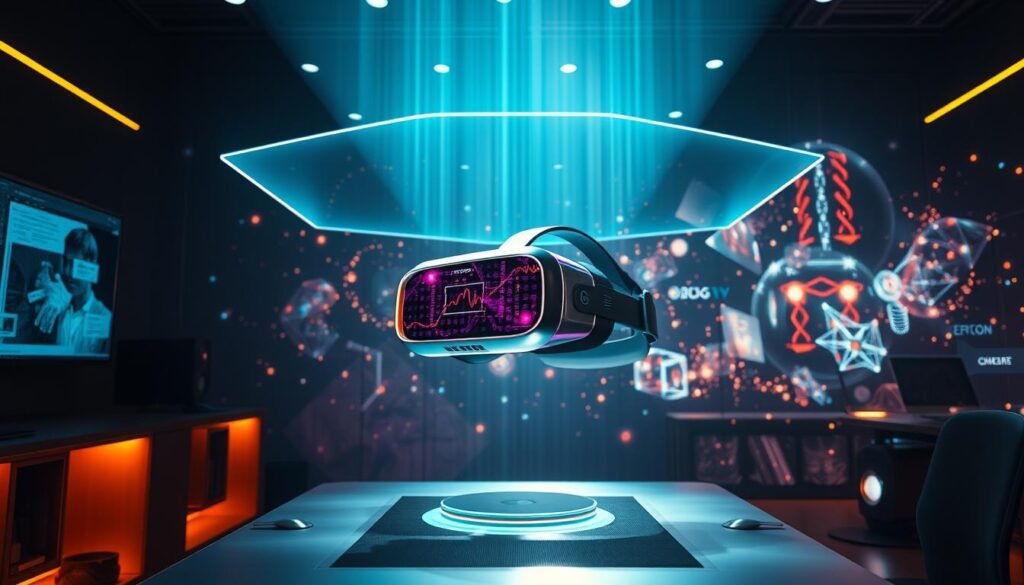
Mixed reality is reshaping how we interact with digital and physical worlds. This technology blends virtual and real elements, creating immersive environments that feel natural and intuitive. Brands like Apple and Samsung are leading the charge, introducing hardware that pushes the boundaries of what’s possible.
Comparing Mixed Reality Solutions
Apple’s Vision Pro and Samsung’s Project Moohan are prime examples of how mixed reality is evolving. The Vision Pro integrates advanced spatial computing, offering a seamless blend of virtual and real-world interactions. Its high-resolution display and intuitive controls make it a standout device.
On the other hand, Samsung’s Project Moohan focuses on affordability without compromising on quality. It delivers a wide field view, ensuring users feel fully immersed. Both approaches cater to different audiences, showcasing the versatility of mixed reality.
Benefits of Spatial Computing Integration
Spatial computing enhances mixed reality by making interactions more natural. It allows devices to understand and respond to physical spaces, creating a more immersive experience. For instance, the Vision Pro uses spatial computing to map your surroundings, enabling virtual objects to interact with real-world surfaces.
This integration also improves usability. Features like gesture recognition and eye tracking make navigation intuitive, reducing the learning curve for new users. As a result, mixed reality becomes more accessible and engaging for everyone.
These innovations are setting new standards in the industry. Whether you’re exploring virtual worlds or enhancing productivity, mixed reality offers endless possibilities. With advancements in hardware and spatial computing, the future of immersive technology looks brighter than ever.
Evolution of Standalone VR Headsets
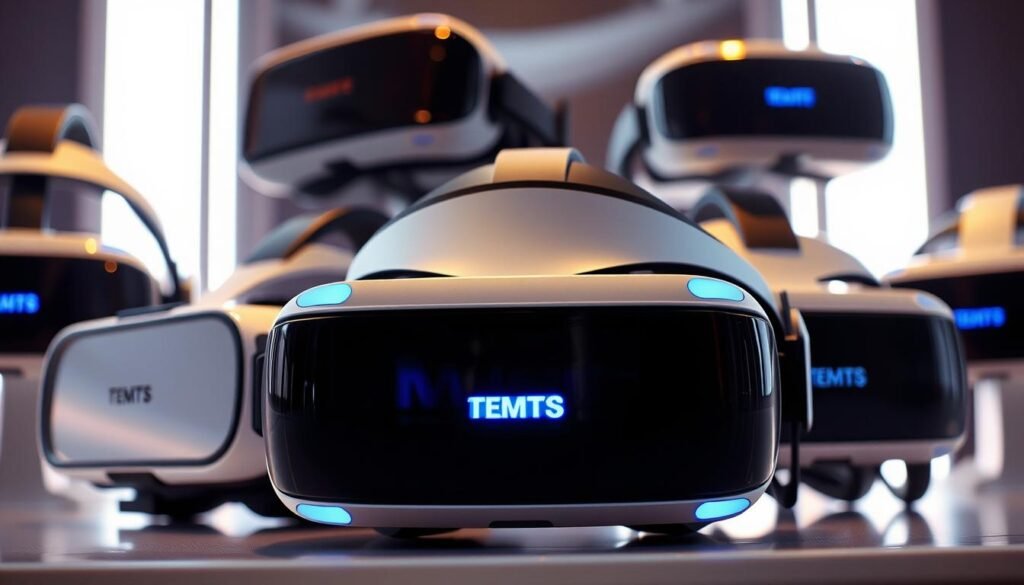
Standalone headsets have come a long way, offering users more freedom and flexibility. These devices have evolved from bulky, PC-dependent setups to sleek, wireless designs that cater to a wide range of needs. The shift towards standalone technology has revolutionised how we experience immersive environments.
One of the most significant advancements is the move away from PC dependency. Devices like the Meta Quest 3 and Quest 3S now operate independently, providing a seamless experience without the need for external hardware. This wireless operation not only enhances convenience but also broadens accessibility for users.
Processing power and battery performance have also seen remarkable improvements. The latest models feature faster processors and longer-lasting batteries, ensuring smooth performance for extended periods. For instance, the Meta Quest 3S boasts a refresh rate of 90-120Hz, making it ideal for gaming and other high-intensity applications.
Visual quality and sensor integration have reached new heights. Higher resolutions and advanced sensors deliver sharper images and more accurate tracking. These enhancements create a more immersive experience, whether you’re exploring virtual worlds or engaging in productivity tasks.
Competitive pricing has played a crucial role in the growing popularity of standalone headsets. Brands like HTC and Meta have struck a balance between performance and cost, making these devices accessible to a broader audience. This affordability, combined with cutting-edge features, ensures that standalone headsets continue to dominate the market.
| Feature | Benefit |
|---|---|
| Wireless Operation | Enhanced convenience and accessibility |
| Improved Processing Power | Smooth performance for extended use |
| Advanced Visual Quality | Sharper images and immersive experiences |
| Competitive Pricing | Affordable access to cutting-edge technology |
As standalone headsets continue to evolve, they are setting new standards for immersive technology. Whether you’re a casual user or a dedicated enthusiast, these devices offer unparalleled freedom and performance.
Wireless Versus PC-Connected VR Systems
![]()
The debate between wireless and PC-connected systems is shaping the future of immersive technology. Both options have their strengths and weaknesses, catering to different user needs. Whether you prioritise convenience or performance, understanding the trade-offs is essential.
Wireless headsets, like the Meta Quest 3S, offer unmatched portability. You can move freely without being tethered to a PC or console. This makes them ideal for casual users or those who value flexibility. However, they often sacrifice resolution and processing power compared to PC-connected systems.
PC-connected systems, such as the Valve Index, deliver superior display quality and performance. They rely on powerful hardware to provide sharper visuals and smoother gameplay. For instance, the PSVR 2 requires a PS5 but offers exceptional tracking and immersive experiences. The downside is the lack of portability and the need for additional equipment.
Here’s a quick comparison of the two:
| Feature | Wireless Headsets | PC-Connected Systems |
|---|---|---|
| Portability | High | Low |
| Resolution | Good | Excellent |
| Tracking | Decent | Advanced |
Ultimately, your choice depends on your priorities. If you value convenience and freedom, wireless headsets are the way to go. For those seeking top-tier performance and display quality, PC-connected systems like the Valve Index or PSVR 2 are unbeatable.
Leading Brands and Their Impact on the VR Market
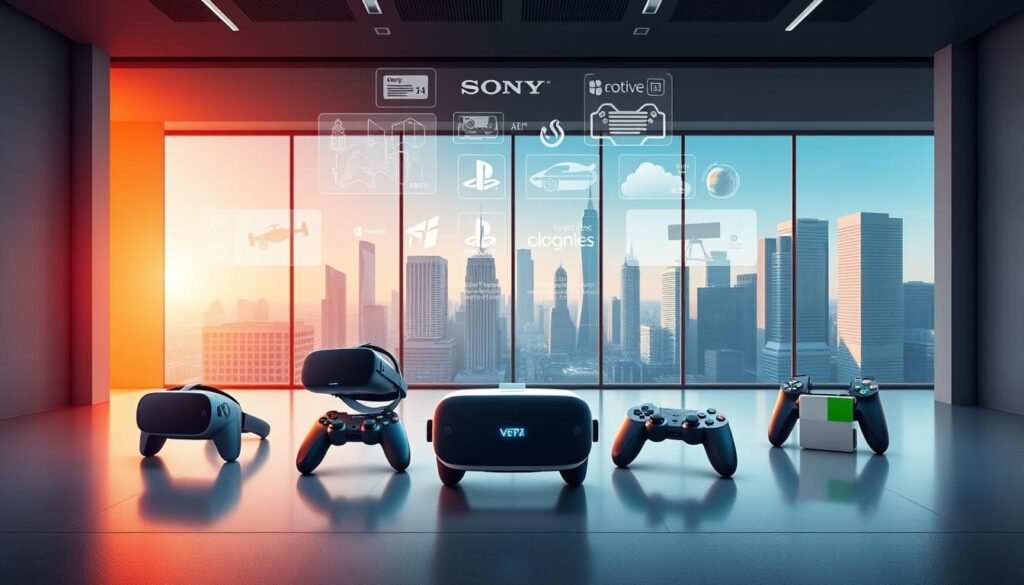
The influence of major brands is reshaping the virtual reality landscape in profound ways. Companies like Meta and Apple are not just releasing products; they are setting new benchmarks for innovation and user experience. Their efforts are shaping the way we interact with immersive technology, pushing the boundaries of what’s possible.
Meta’s Revolutionary Quest Series
Meta has consistently delivered groundbreaking hardware with its Quest series. The Meta Quest 3S, for instance, offers wireless freedom and advanced features at a competitive price. This makes it accessible to a wide audience, from casual users to professionals.
The Quest series has also set a high standard for design and performance. Its ergonomic controllers and high-resolution displays ensure a comfortable and immersive experience. Meta’s focus on innovation has influenced the way other brands approach product development.
Apple Vision Pro and Premium Experiences
Apple’s Vision Pro takes a different approach, targeting the premium market. Priced at $3,499, it offers cutting-edge spatial computing and an unparalleled eye-tracking system. These features create a seamless blend of virtual and real-world interactions, setting a new benchmark for high-end devices.
While the Vision Pro’s price may be steep, its advanced capabilities justify the cost for many users. Apple’s focus on quality and functionality has raised user expectations, influencing the competitive landscape in a significant way.
| Brand | Key Features | Price Range |
|---|---|---|
| Meta Quest 3S | Wireless, ergonomic design, high-resolution display | £499 |
| Apple Vision Pro | Spatial computing, advanced eye-tracking, premium build | £3,499 |
Both Meta and Apple are driving the VR market forward, each in their own way. Whether you prioritise affordability or premium features, these brands offer options that cater to diverse needs. As you evaluate these devices, consider the trade-offs between quality and price to find the best fit for your immersive experience.
Advanced Controller and Tracking Technologies
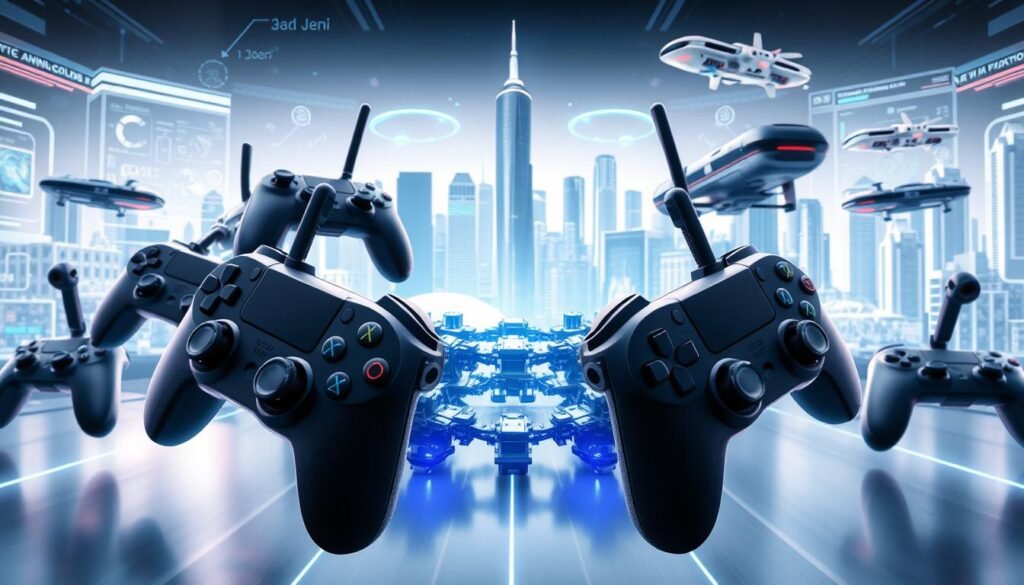
The evolution of controllers and tracking systems is revolutionising how we interact with virtual environments. These advancements are not just about better hardware; they focus on enhancing user comfort, precision, and immersion. Whether you’re a gamer or a professional, these innovations are designed to elevate your experience.
Ergonomic Controller Designs
One of the most significant improvements this year is in ergonomic design. Controllers like Meta’s Touch Plus are now lighter and more comfortable, reducing user fatigue during extended sessions. The curved shape fits naturally in your hands, ensuring a secure grip even during intense gameplay.
These designs also incorporate textured surfaces for better handling. This attention to detail ensures that your interactions feel seamless and intuitive. As a result, you can focus more on the experience and less on the hardware.
Cutting-Edge Finger Tracking Innovations
Finger tracking is another game-changer in immersive technology. Valve’s latest solutions allow for precise detection of individual finger movements. This means you can perform complex gestures, like pinching or pointing, with remarkable accuracy.
This technology is powered by advanced software that interprets your hand movements in real-time. It creates a more natural interaction, making virtual environments feel lifelike. For example, you can now pick up objects or type on a virtual keyboard with ease.
Both Meta and Valve are leading the way in these innovations. Their focus on user-centric design ensures that these technologies are accessible and practical. As we look ahead, these advancements will continue to shape the future of immersive experiences.
“The integration of ergonomic designs and finger tracking is transforming how we engage with virtual worlds.”
To explore more about the latest devices, check out this comprehensive guide on the best options available. These innovations are setting new benchmarks, ensuring that your view of virtual reality is clearer and more immersive than ever before.
Display Quality and Field of View Enhancements
Advancements in display quality and field of view are set to redefine immersive experiences in 2025. The latest devices are pushing the boundaries of what’s possible, offering sharper visuals and wider fields of view that make virtual environments feel more lifelike.
A higher screen resolution is crucial for immersion. It ensures that every detail is crisp and clear, enhancing the realism of virtual worlds. For instance, devices like the Apple Vision Pro feature micro-OLED displays that deliver stunning visuals with accurate colour reproduction.
Wider field of view is equally important. It expands your peripheral vision, making the experience feel more natural. The Meta Quest 3S, for example, offers a 110-degree field of view, ensuring you feel fully immersed in your surroundings.
Enhanced display technology also reduces issues like motion blur and ghosting. High-refresh rate screens, such as those found in the PlayStation VR 2, provide smoother transitions, which are essential for fast-paced activities like gaming.
When choosing a headset, it’s important to weigh the balance between hardware improvements and your overall visual experience. A device with a high-resolution screen and wide field of view can significantly enhance your immersion.
| Feature | Benefit |
|---|---|
| Higher Screen Resolution | Sharper, more detailed visuals |
| Wider Field of View | Expanded peripheral vision |
| High-Refresh Rate Displays | Smoother transitions, reduced motion blur |
These advancements are transforming how we interact with virtual environments. Whether you’re exploring new worlds or enhancing productivity, the right option can make all the difference. For more insights, check out this comprehensive guide on the best headsets available.
Ergonomics and Design in Next-Generation VR Headsets
The design of next-generation headsets is prioritising user comfort like never before. Whether you’re gaming, working, or exploring a virtual library, these devices are built to ensure prolonged use without discomfort. Innovations in materials and adjustability are transforming how we interact with immersive technology.
Comfortable Wear and Material Optimisation
Modern headsets are designed to be lightweight and comfortable. The Meta Quest 3S, for example, uses breathable fabrics and balanced weight distribution to reduce strain. This makes it ideal for extended sessions, whether you’re working or gaming.
Adjustable head straps and face cushions are also key features. These allow you to customise the fit, ensuring the product feels secure without being too tight. Such innovations help reduce fatigue, making it easier to stay immersed for longer periods.
Material choices have also improved. Soft, hypoallergenic materials are now standard, reducing irritation during use. These enhancements ensure that the headset feels comfortable, even after hours of wear.
Reducing Fatigue During Prolonged Use
Design improvements are not just about comfort; they also focus on reducing fatigue. A well-balanced headset minimises pressure on your neck and face, allowing you to focus on your tasks or games without distraction.
For instance, the Quest 3S has been praised for its ergonomic design, which distributes weight evenly. This makes it a great choice for both casual users and professionals who rely on immersive technology for their work.
| Feature | Benefit |
|---|---|
| Lightweight Design | Reduces strain during extended use |
| Adjustable Straps | Ensures a secure and comfortable fit |
| Breathable Materials | Prevents overheating and irritation |
These advancements in ergonomic design are making headsets more user-friendly. Whether you’re exploring a virtual library or working on a project, the right design can significantly enhance your experience.
Integration of Augmented and Mixed Realities
The integration of augmented and mixed realities is transforming how we interact with digital environments. Upcoming devices are blending real and virtual elements seamlessly, creating immersive experiences that feel natural and intuitive. This convergence is not just a trend; it’s a future necessity for both gaming and professional applications.
One of the most significant advancements is the use of passthrough technology. This feature allows you to see your physical surroundings while interacting with virtual objects. Devices like the Apple Vision Pro and Meta Quest 3S are leading the way, offering high-quality passthrough that enhances immersion and usability.
Spatial computing is another game-changer. It enables devices to map your environment, allowing virtual elements to interact with real-world surfaces. For instance, you can place a virtual screen on your desk or manipulate 3D models in your living room. This technology is essential for creating more intuitive and engaging experiences.
Here’s why this integration matters:
- It bridges the gap between physical and digital worlds, making interactions more natural.
- It enhances productivity by enabling seamless multitasking in mixed environments.
- It opens up new possibilities for gaming, education, and professional training.
“The blending of augmented and mixed realities is setting the stage for a more immersive and interactive future.”
As you explore these devices, consider the potential of AR and MR. They are not just add-ons but core features that elevate the quality of immersive experiences. Whether you’re a gamer, educator, or professional, this integration is designed to meet your need for innovation and practicality.
Software Ecosystem and App Library Developments
The software ecosystem is becoming the backbone of immersive experiences. A rich library of apps and games is essential for maximising the potential of immersive devices. Platforms like the Meta Quest Store and Steam are leading the way, offering diverse content that caters to both gaming and productivity needs.
Regular software updates play a crucial role in enhancing device performance. These updates ensure that your device stays compatible with the latest tech advancements. For instance, the Meta Quest 3S frequently receives updates that improve tracking and add new features, keeping the experience fresh and engaging.
Interoperability with other devices and platforms is another key factor. It allows you to seamlessly switch between different worlds of immersive experiences. Whether you’re using a standalone headset or a PC-connected system, this flexibility enhances the overall functionality of your device.
Here’s a quick look at the benefits of a robust software ecosystem:
- Access to a wide range of apps and games for diverse needs.
- Regular updates that improve performance and add new features.
- Interoperability with other devices for a seamless experience.
When choosing a headset, consider the app library and software support. A device with an extensive app library ensures you have access to the latest content and features. For more insights, explore this comprehensive guide on leading companies in the immersive tech industry.
| Feature | Benefit |
|---|---|
| Rich App Library | Diverse content for gaming and productivity |
| Regular Updates | Improved performance and new features |
| Interoperability | Seamless integration with other devices |
As the world of immersive tech continues to evolve, a robust software ecosystem will remain a key factor in enhancing your experience. Whether you’re a gamer or a professional, the right app library can make all the difference.
Future Trends Shaping VR Technology
The future of immersive technology is brimming with possibilities, driven by continuous innovation. As we look ahead, advancements in hardware and user experience are set to redefine how we interact with digital environments. These trends are not just about better performance; they focus on creating more intuitive and accessible experiences.
Emerging Hardware Innovations
Upcoming hardware innovations are expected to push the boundaries of what’s possible. For instance, improvements in performance will enable smoother and more responsive interactions. Devices are also becoming lighter and more ergonomic, ensuring comfort during extended use.
Tracking systems are evolving to offer greater precision. This means your movements in the virtual world will feel more natural and instantaneous. These advancements are crucial for creating immersive experiences that feel lifelike.
Evolution of User Experience
The user experience is set to become more intuitive and engaging. Interfaces are being designed to reduce the learning curve, making it easier for everyone to navigate virtual environments. This focus on design ensures that immersive technology is accessible to a broader audience.
Cheaper production costs are another key trend. As manufacturing processes become more efficient, high-quality devices will become more affordable. This will democratise access to immersive technology, allowing more people to experience its benefits.
“The integration of advanced hardware and user-centric design is shaping the future of immersive technology.”
As these trends continue to evolve, it’s clear that immersive technology is becoming an integral part of our lives. Whether you’re a gamer, professional, or casual user, these innovations promise to enhance your digital interactions in meaningful ways.
Conclusion
The advancements in immersive technology are reshaping how we interact with digital environments. From video enhancements to ergonomic designs, each innovation brings us closer to a more seamless experience. Brands like Meta and Apple are leading the charge, offering devices that blend functionality with comfort.
These developments are not just a bit of progress; they redefine what’s possible. Whether it’s improved tracking or spatial computing, each feature adds a new layer of immersion. As you explore these technologies, you’ll notice how they cater to diverse needs, from gaming to professional applications.
Staying informed is key. The face of immersive tech is evolving rapidly, and keeping up with the latest trends ensures you’re ready to embrace the future. For more insights, check out this comprehensive guide on the growing impact of these technologies.
As we move forward, these innovations will continue to shape our digital interactions. The pick of the latest devices offers something for everyone, ensuring you’re always at the forefront of this exciting journey.
FAQ
What makes the Meta Quest series stand out in 2025?
How does the Apple Vision Pro enhance VR experiences?
What are the key features of the PSVR 2 for gaming?
How does mixed reality differ from traditional VR?
What advancements are seen in standalone VR headsets?
Why choose a PC-connected VR system over a standalone one?
What role does ergonomics play in VR headset design?
How does eye-tracking improve VR experiences?
What are the benefits of spatial computing in VR?
How is the VR software ecosystem evolving?
Source Links
- Among Us 3D Is A New Game That Brings Together PC And VR Players, Free Demo Out Soon
- Alien: Rogue Incursion is the VR game of my dreams — but don’t play it on Meta Quest 3
- 10 Best Performing S&P 500 Stocks So Far in 2025
- Key Gaming Developments and Trends to Watch in 2025
- Apple’s Vision Pro has a problem a year into its existence: Not enough apps
- Vision Pro could soon get an Apple Intelligence upgrade, but can it boost sales?
- Meta drops dates for Meta Connect 2024 – it’s still 7 months away but here’s what I think the big announcements will be
- Apple Vision Pro Headset Gets Overdue Missing Features, Including Apple Intelligence
- Computers
- Top 10 Companies in Virtual Events Market You Can Trust
- The RealReal: AI Tools Improve Sales, Operational Efficiency, Customer Service | PYMNTS.com
- David and Goliath: Does Big Tech’s grip on the emerging XR market exclude start-ups from success?
- Innovative Smart Home Products Shown at CES 2025 – Innovation & Tech Today
- Location-based Entertainment Market worth $15.33 billion by 2029- Exclusive Report by MarketsandMarkets™
- AWE 2025 Speakers Include Oculus Founder, Meta’s VP of Metaverse Experiences, & ILM Immersive VP
- Quest v74 Brings Web Shortcuts, DisplayPort Out & More
- The Best Budget VR Headsets – IGN
- VR Reviews and Lab Tests
- How to Connect Your PlayStation VR2 Headset to a PC: Step-by-Step Guide – IGN
- David and Goliath: Does Big Tech’s grip on the emerging XR market exclude start-ups from success?
- The XR Week Peek (2025.02.18): Ray-Ban Meta sold 2M devices, Meta may be working on humanoid robots, and more!
- Job Simulator Dev Says ‘We’re Close’ To Mass Market Immersive VR
- Meta Connect 2025 Takes Place September 17 & 18
- Design and usability evaluation of an immersive virtual reality mirrored hand system for upper limb stroke rehabilitation – Scientific Reports
- Best Virtual Reality Stocks To Consider – February 17th
- Virtual Reality Stocks Worth Watching – February 18th
- Hypergrid Business – Covering virtual reality, immersive worlds, and other emerging technologies
- visionOS 2.4 Will Bring Apple Intelligence, Spatial Gallery, iPhone App & Guest Flow
- Non-Invasive BCI-VR Applied Protocols as Intervention Paradigms on School-Aged Subjects with ASD: A Systematic Review
- The Impact of Spatial Dimensions, Location, Luminance, and Gender Differences on Visual Search Efficiency in Three-Dimensional Space
- AR/VR Trends and Predictions For 2025 & Beyond
- XR Predictions 2024: The Year in Review and What’s Next for 2025 – XR Today
- Vision Pro Archives | Cult of Mac
- Generative AI
- Top Augmented & Virtual Reality (AR & VR) Development Courses
- The Future of Gaming: Trends for 2025 and Beyond
- How the NHS is approaching the future of XR and metaverse technologies
- Frontiers | Practical considerations of clinical XR (AR/VR) deployments
- Meta Quest 3 vs. 3S: Which VR Headset Is Right for You?
- PlayStation VR2 Hand Tracking Review: How Does It Compare To Quest 3’s?
